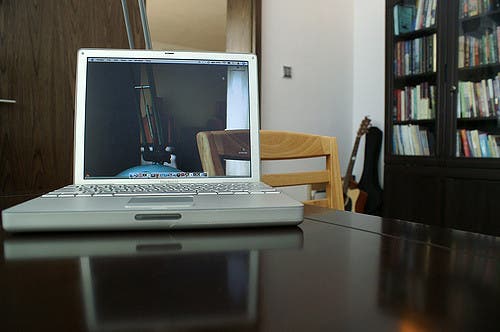Researchers from UC Berkeley have designed a millimeter-wide, light-emitting device that’s fully transparent when powered off. The material, just three atoms thick, could form the base for displays that would be invisible when turned off.
The device is based on a novel material — a light-emitting, monolayer semiconductor. It was developed in the laboratories of Ali Javey, professor of Electrical Engineering and Computer Sciences at Berkeley, and its light-emitting properties were first reported on in 2015. However, the team hadn’t been able to construct an actual light-emitting device using the novel semiconductor by that time — mostly due to fundamental constraints of using LED (light emitting diode) technology in tandem with monolayer semiconductors.
They’ve been working hard to solve those problems, however — in their new paper, the team details how they’ve worked around these limitations, allowing them to scale down LED technology anywhere from a few millimeters to under the width of a human hair. The team made the devices wide and long, to make sure the devices emit light intense enough for our eyes to pick up on.
Now you see it, now you don’t
“The materials are so thin and flexible that the device can be made transparent and can conform to curved surfaces,” said co-author Der-Hsien Lien, a postdoctoral fellow at UC Berkeley.
The kind of LEDs you can buy right now are made from a semiconducting material, injected with positive and negative electrical charges. When electricity runs through these LEDs, electrons move from the positively-charged area into electron ‘holes’ on the negative side, releasing light in the process. That’s the fancy explanation. The simple explanation is that LEDs work pretty much the same way as an incandescent light bulb, the main difference being LEDs don’t ‘burn’ and they don’t generate heat — the light you see comes solely from the passing of current through a semiconductor material, not from heating something. This makes them last much, much longer than an incandescent bulb.
One of the fundamental challenges I mentioned earlier is to form a contact that can efficiently inject these charges — and it’s a particularly problematic one for monolayers because there’s physically very little material to work with. The team worked around this issue by engineering a device that only uses one contact on the semiconductor.

Gif of the device in action. Probes inject positive and negative charges into the light emitting device, which is transparent under the campanile outline, producing bright light. Credit: Javey lab
They layered the semiconducting on an insulator, then placed electrodes on the monolayer and underneath this insulator. This allowed them to apply an alternating current (AC) signal across the surface of the insulator. As the AC switches polarity from positive to negative (and vice versa), both negative and positive charges are present in the semiconductor at the same time — which creates light. The team showed that this mechanism works with four different monolayer materials, all of which emit a different colored light.
Soon-to-be
The team’s efforts amount only to a proof-of-concept right now; much more research needs to be done before their atom-thin material is ready for commercial use. Most notably, the team has to work on improving its efficiency. While the tools they can use to measure this device’s efficiency leave a pretty significant margin of error, the team says it’s probably 1% right now. Commercial LEDs, to put that into context, run at about 25-30% efficiency — usually.
“A lot of work remains to be done and a number of challenges need to be overcome to further advance the technology for practical applications,” Javey said. “However, this is one step forward by presenting a device architecture for easy injection of both charges into monolayer semiconductors.”
However, the concept is likely applicable to other kinds of materials and devices. Given its versatility, we’re likely to see the team’s device used in all manner of applications where an invisible display is necessary or desirable. We’re also likely to see it used for ‘cool’ applications — the team doesn’t write off the possibility that their research will lead to atomically-thin displays used for decoration, from skin to architecture.
The paper “Large-area and bright pulsed electroluminescence in monolayer semiconductors” has been published in the journal Nature Communications.










